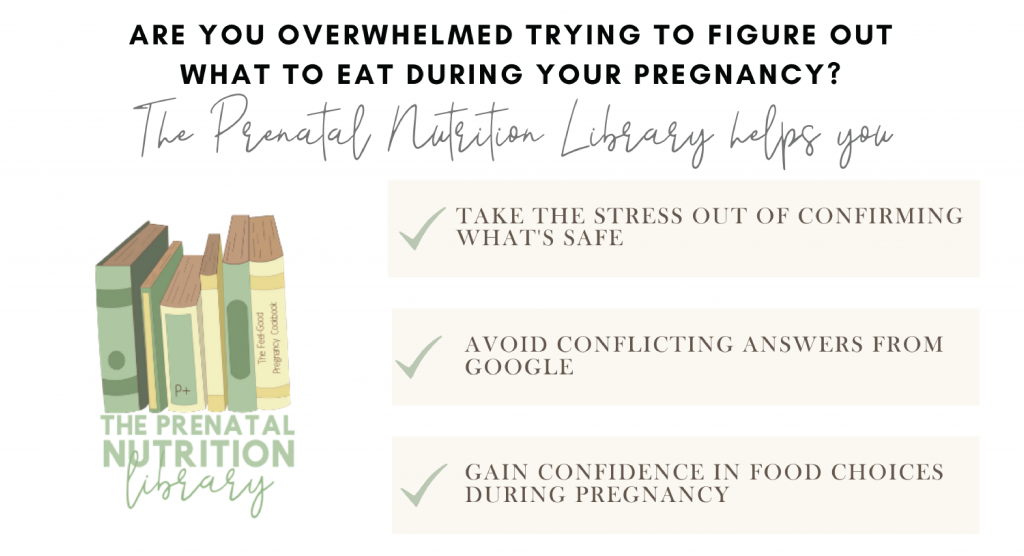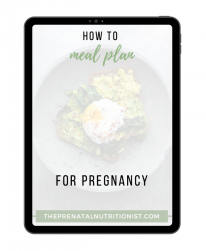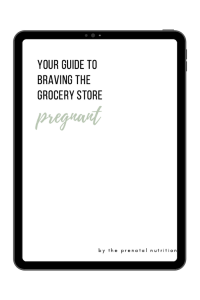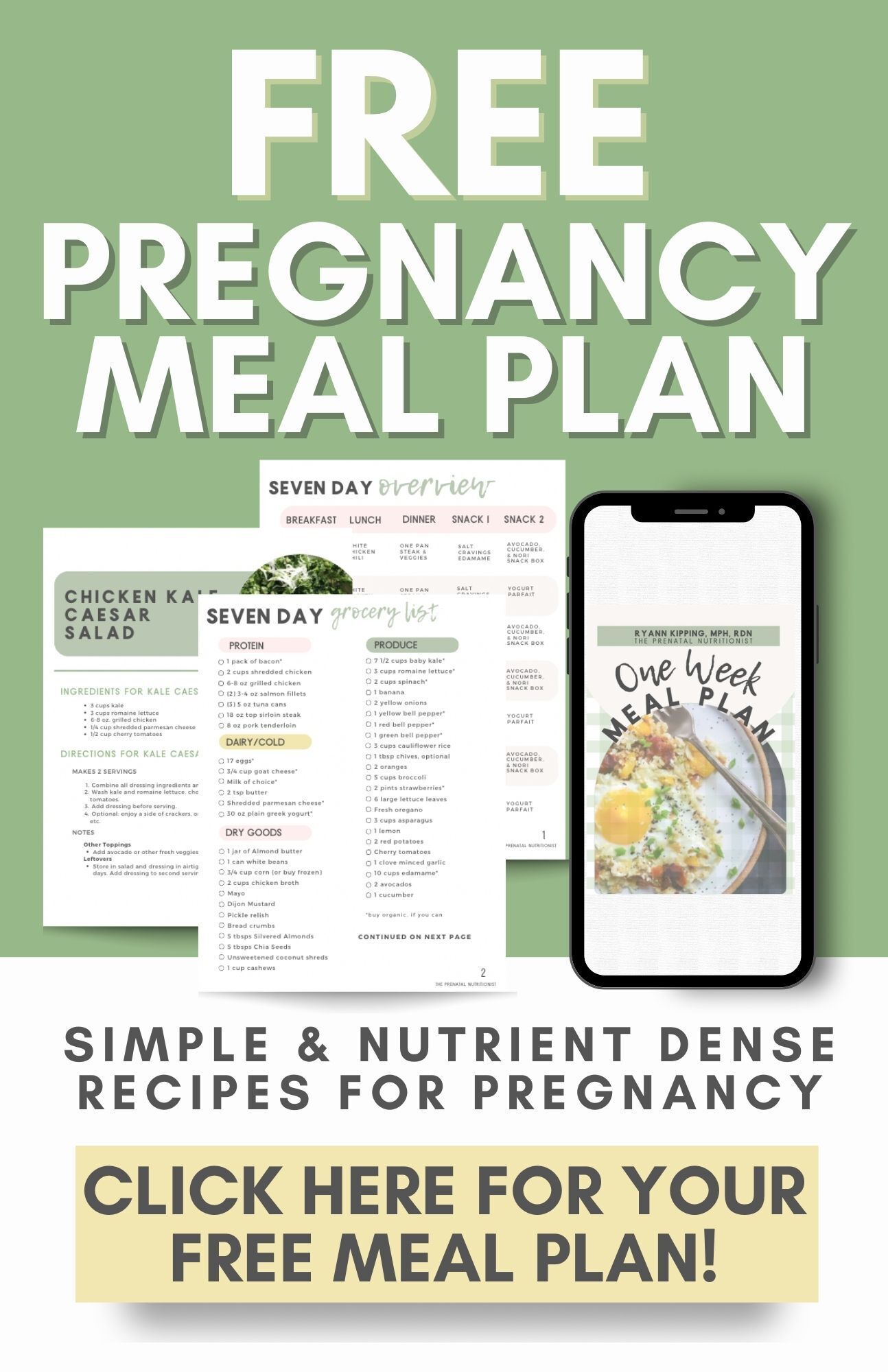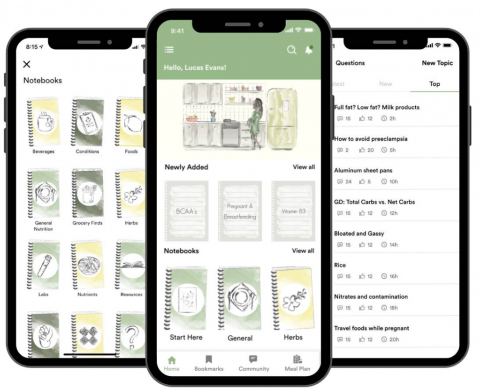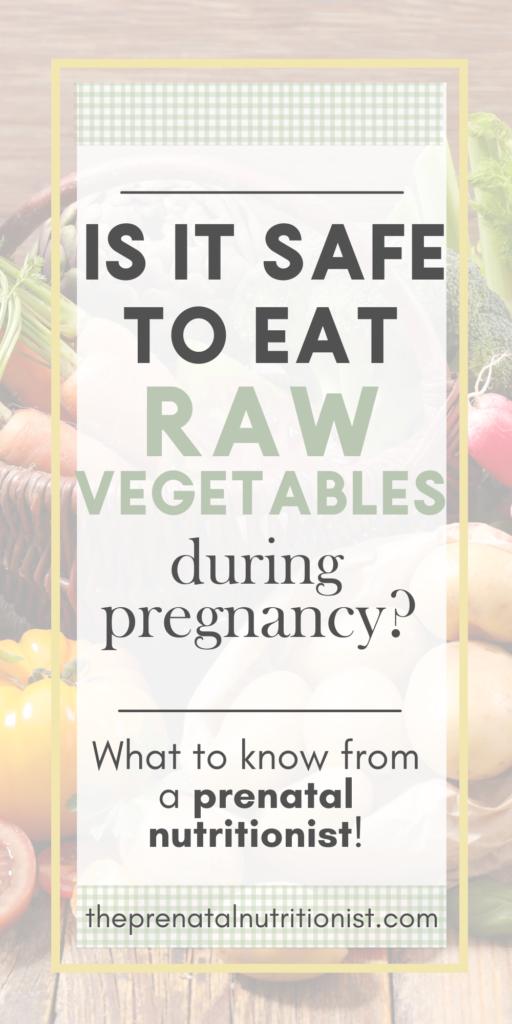
Vegetables are excellent sources of vitamins and minerals. They are an important part of an overall healthy diet, including during pregnancy.
Luckily, there are many different ways to enjoy vegetables, including eating them fresh. However, taking extra precautions when eating raw vegetables while pregnant is essential.
I’m dedicating this post to sharing everything you need to know about eating raw vegetables during pregnancy!
Raw Vegetables For Pregnancy
What Are Raw Vegetables?
Raw vegetables are uncooked and eaten as they come from the ground. They haven’t been heated in any way. Carrots, bell peppers, leafy greens, and celery are commonly enjoyed as raw vegetables. Both raw and cooked vegetables have health benefits!
If you prefer raw vegetables to cooked vegetables, keep reading! And, if you are confused about what to eat and what to avoid during pregnancy, we urge you to check out The Prenatal Nutrition Library, a searchable database, so you will have answers within seconds and peace of mind that what you eat is safe and nutritious (use code: 50OFF for 50% off your first month)!
Is It Safe To Eat Raw Vegetables During Pregnancy?
Yes!
Many raw vegetables are safe for a pregnant woman to eat. A healthy pregnancy diet can include the following raw vegetables (and more!), as long as they are washed thoroughly beforehand:
- Carrots
- Broccoli
- Celery
- Green beans
- Zucchini
- Bell peppers
- Cabbage
- Asparagus
- Kale
- Collard greens
- Brussels sprouts
Eating raw vegetables during pregnancy can provide your developing baby with essential nutrients. However, it’s important to be aware of the potential food safety risk linked to eating uncooked vegetables.
Raw fruits and vegetables are at risk of being contaminated by bacteria or toxoplasma, a parasite that lives on unwashed fruits and vegetables. Toxoplasma is particularly dangerous for pregnant women and their unborn babies. A report from the Centers for Disease Control and Prevention reports an estimated 400-4000 cases per year of congenital toxoplasmosis. This is a very low number, but still a serious condition if contracted.
You can take several precautionary steps to reduce the risk of foodborne illnesses from raw fruits and vegetables.
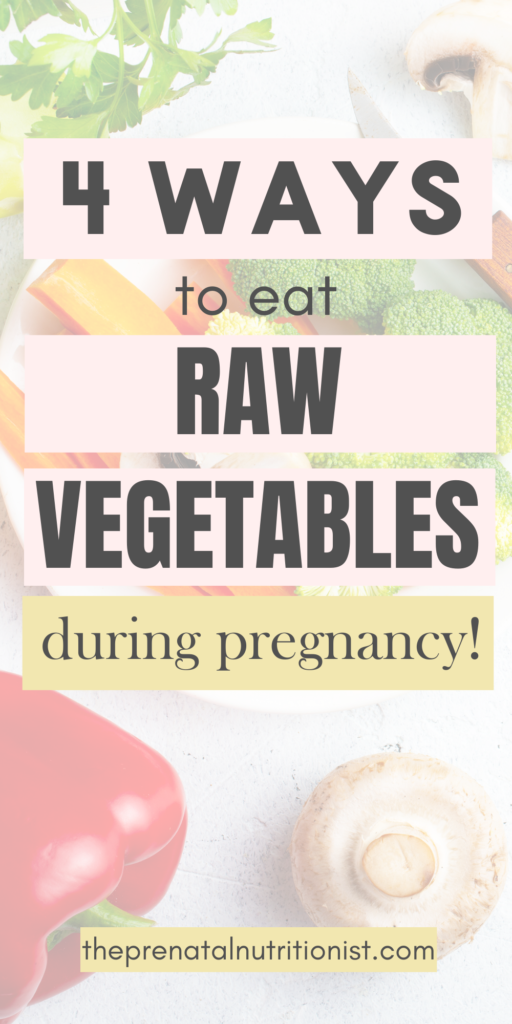
How To Eat Raw Vegetables Safely
Wash vegetables thoroughly before eating.
Raw vegetables and fruit should always be washed thoroughly before eating to reduce the risk of potentially harmful bacteria.
Remove any damaged or bruised parts of the vegetable.
Any damaged or bruised parts should be removed from the vegetable before you eat it. This is because bacteria tend to thrive in those places.
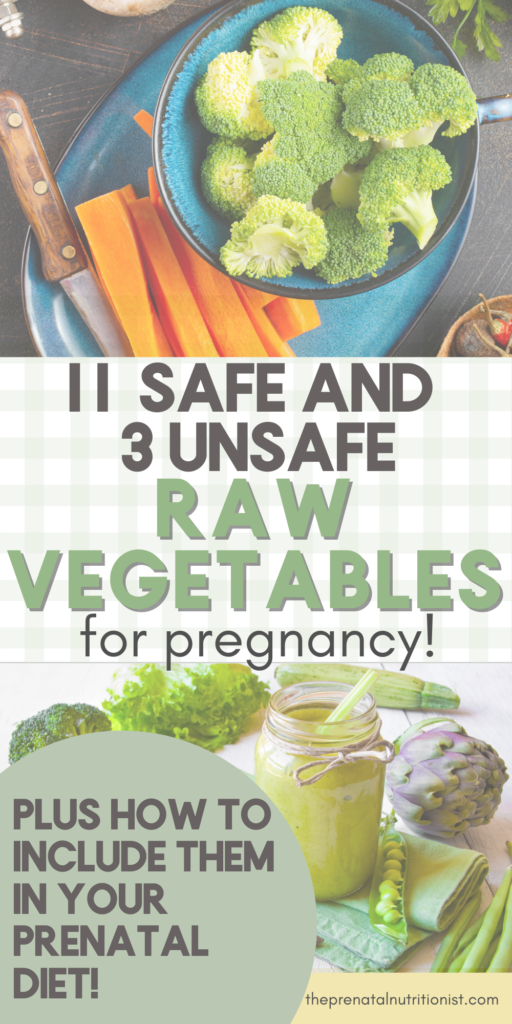
Ways To Eat Raw Vegetables
Salads
It’s hard to beat the nutritional value of a salad loaded with healthy ingredients. A salad is a fantastic side dish, although it can also serve as a delicious and filling main dish. You can customize it however you want to include vegetables, proteins, nuts, seeds, and other foods you enjoy,
For the most nutritious salad, use a variety of lettuces like Kale or Boston lettuce. Then throw in some other greens like arugula or spinach. Pile it high with chopped, raw vegetables like cucumbers, carrots, celery, bell peppers, broccoli, and more. Include a protein source like grilled chicken, hardboiled eggs, or shrimp. Top it off with olive oil, apple cider vinegar, or other homemade salad dressing ingredients, and you’re good to go!
Smoothies
Drinking a smoothie is an easy and delicious way to consume several servings of fresh fruits and vegetables in one sitting. Smoothies make great on-the-go breakfasts too! Select veggies you like, wash them thoroughly, and blend them with a liquid. Add a protein source plus half an avocado for healthy fats and a creamier texture, and you have a super nutritious drink. Zucchini, cauliflower, carrots, and leafy greens are a few vegetables that work well in smoothies.
In Dressings
Raw vegetables can also be used to make great homemade salad dressings. Try blending spinach, onions, cucumber, red peppers, and garlic with olive oil, apple cider vinegar, salt, and pepper. Experiment with different raw vegetables until you devise a recipe that works for you. Then, you’ll never have to repurchase salad dressing!
As A Snack With Dip
Raw vegetables also make a tasty snack. They are a great, healthier alternative to crackers and chips or to enjoy alongside your crackers and chips. You can put together a large veggie tray to share or prepare a plate for yourself.
Raw vegetables that make great snacks include carrots, celery, cucumber, bell peppers, snap peas, and broccoli. Please wash your veggies thoroughly, then serve them with a homemade or pregnancy-approved store-bought dip.
Raw Vegetables To Avoid During Pregnancy
Raw Sprouts
Sprouts are grown in warm and humid conditions, which are the conditions that allow bacteria to thrive. As a result, raw sprouts are very susceptible to growing dangerous bacteria. Those bacteria, E. Coli, Salmonella, and Listeria, can not only make you incredibly sick but can also potentially cause serious harm to your unborn baby.
Several types of sprouts include alfalfa, radish, mung bean, broccoli sprouts, red clover, and sunflower. All raw sprouts should be avoided during pregnancy unless thoroughly washed and then cooked to 165 F before eating.
When eating out during pregnancy, ask for any dishes that contain raw sprouts to be made without them or fully cooked within the dish. During pregnancy, you can cook them before eating them or avoid eating them altogether. Your choice!
Pre-Cut Lettuce
Pre-cut fruits and vegetables, in particular romaine lettuce, more commonly appear on food-borne illness outbreak lists (all the data is publicly available via the CDC). The best practice is to buy whole heads of lettuce, wash them, chop them, and prepare them yourself versus buying pre-cut varieties. Pre-cut lettuce has more points of contact in its journey to your table, which creates more opportunities for it to be potentially contaminated.
Salad Bars
Going to the salad bar seems like a healthy meal option, but it’s best avoided during pregnancy. This is because, despite all the healthy ingredients available, there is a significant risk of contamination and food-borne illness.
There are multiple variables to control that could contaminate food on a salad bar, from ensuring proper holding temperatures to the people that come into contact with the buffet or salad bar, including employees and other restaurant patrons. While we hope all these people are implementing practices like washing their hands, that’s only sometimes the case. So to reduce your risk of getting sick, skip the salad bar.
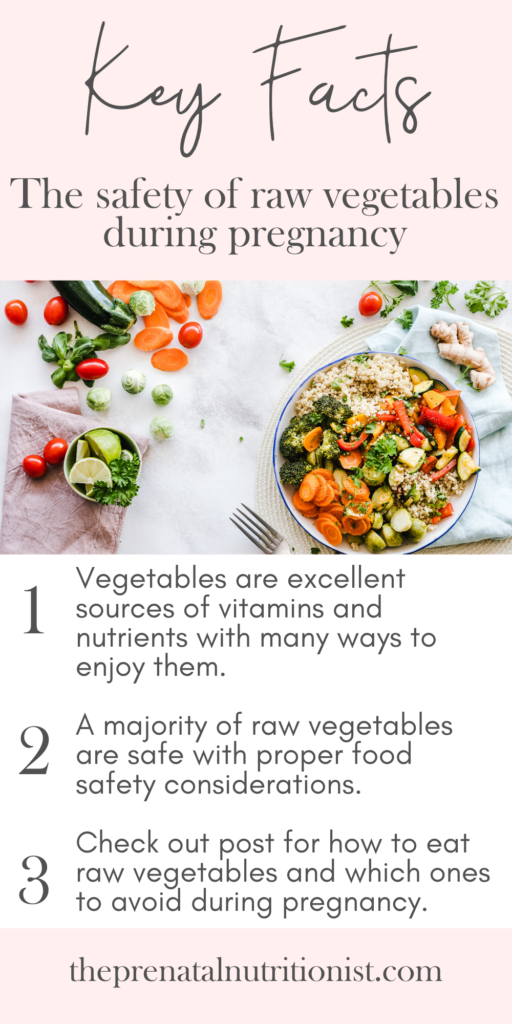
Raw vegetables are a significant, nutrient-packed part of a pregnancy diet.
Which veggies do you enjoy raw? What are some of your favorite ways to eat raw vegetables? I want to hear from you!
To learn more about what’s safe or not safe to eat during pregnancy, join the Prenatal Nutrition Library. The PNL is a searchable database, so you will have peace of mind that what you eat during pregnancy is safe and nutritious. There’s so much information just waiting for you HERE.
